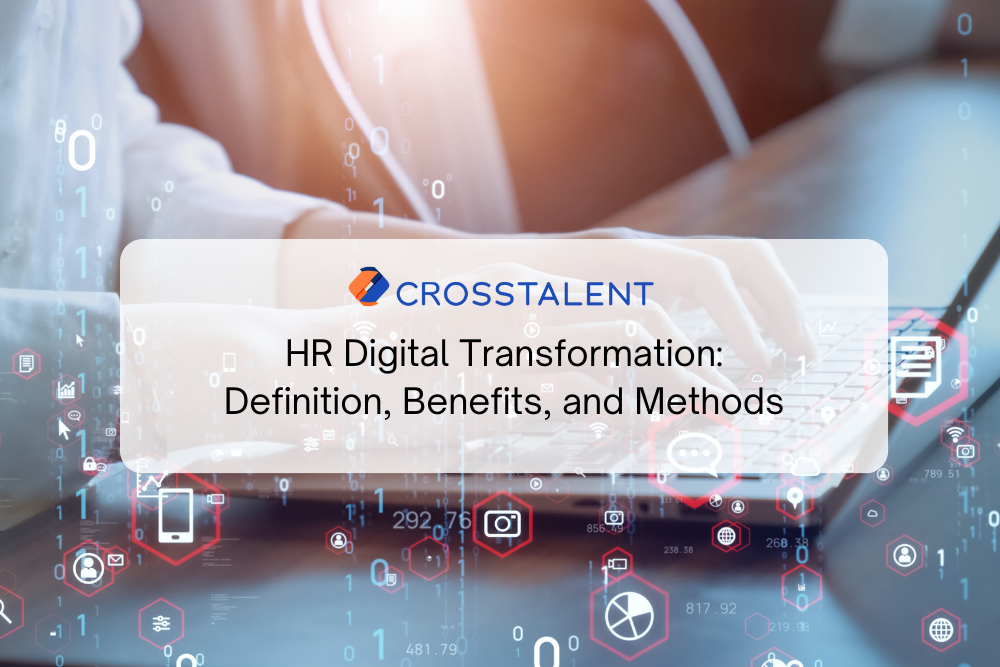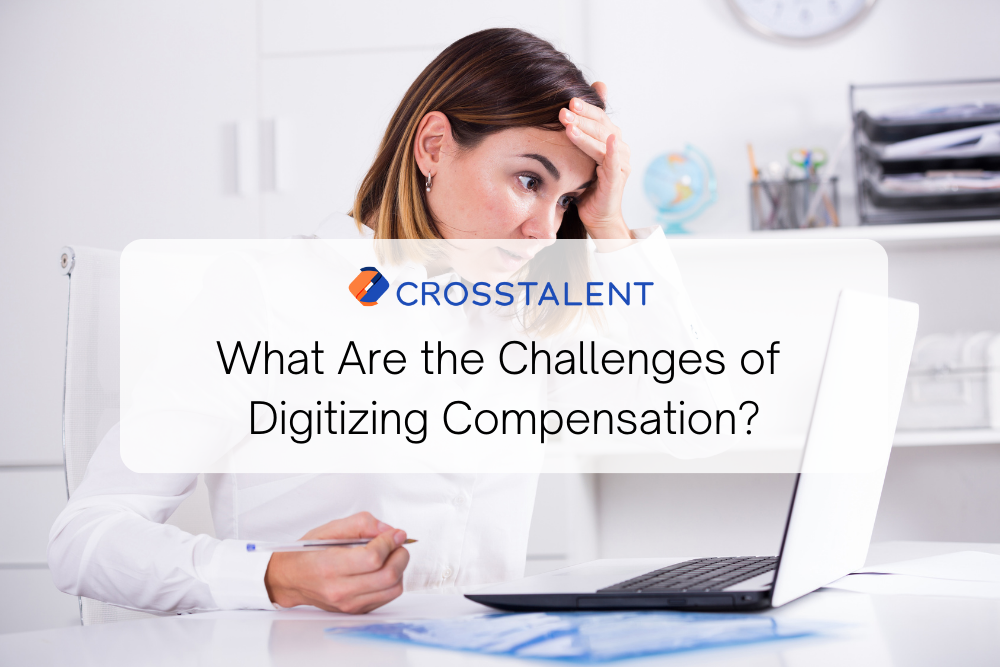In today’s digital age, growth-driven companies should consider digital shifts. The goal is to use digital tools to stay connected with employees and other external partners (e.g., customers and suppliers).
Just like sales or finance, the HR department is no exception. HR digital transformation supports data digitization and decreases paper-based data management.
Plus, nowadays, we mainly work online from a laptop to support high mobility. Therefore, embracing HR digitalization is logical as this streamlines the company workflow, leaving little room for notebooks and pens.
But what exactly is HR digital transformation? Is it only about data digitization? And why and how should companies embrace HR digitization? This blog answers these questions.
What is HR Digital Transformation?
Digital transformation, or simply digitization, refers to transforming data from paper to digital format. When we scan a document, for example, we are digitizing.
Therefore, human resources (HR) personnel administration covers all the managerial tasks of the people. It covers all the essential and compulsory administrative functions from when an employee begins the contractual work relationship until its termination. This includes recruitment interview management, drafting employment contracts, scheduling and logging medical check-ups, employee feedback and performance reviews, etc.
Digitizing HR administrative management, thus, means computerizing and dematerializing all HR documents as far as possible. It has one primary goal: to increase the overall HR work productivity, with access to all types of information anywhere, anytime. In short, to be more efficient.
What Are Some Examples of HR Digital Transformation?
Paperless Payslips – Payroll
In addition to time management solutions (with its transformative clock-in and clock-out badge systems), digitalization comes in digital payslips.
When digital payslips were first introduced, employee consent was required. This innovative method was offered with the benefits of high security, ease of use, and simpler management (no more tedious filing of payslips in bulky filing cabinets or losing these precious documents when you move house!) With the dematerialization of payslips, employees are provided with peace of mind.
In addition, digital payslips have longer data preservation time. In France, employers must keep digital payslips for 50 years, while paper payslips must be kept only for five years! Although the format changes, the legal power of digital payslips remains the same as the paper format, entitling employees to the same pension rights.
CV and Test Results Screening – Recruitment
Another example of HR digital transformation is the recruitment process. Since every recruitment step is paperless, applications can be processed digitally.
For instance, you can send an email confirmation to applicants after they send their documents and ask the system to analyze the personality and aptitude tests. This digital method lets you instantaneously evaluate the applicant profile to determine the individual’s character. You can set the workflow so the recruitment manager receives a comprehensive report before the interview. The same notion can also be applied to a CV screening process. The digital solution can help you pre-select the most promising profiles using an algorithm and predictive models.
These examples of paperless payslips and digital recruitment processes have proven to be productive methods in solving today’s HR challenges. As a result, more and more HR functions are planned to go digital. Employers quickly realized that digitization was essential for time savings and greater productivity.
Why is HR Digitization Important?
It Saves Time
Digitalization enables HR teams to improve their processes, making them more reliable, time-efficient, and resource-efficient. You avoid lengthy administrative exchanges, as requests and responses are instantaneous. This time savings and reliable workflow are vital, especially in recruitment, training, time and leave management, and payroll.
Moreover, the administrative tasks of the people management team involve constant, time-consuming database updates that are prone to errors and delays. Not to mention, managing paper-based data has a high risk of losing documents and forgetting to send important information in time.
However, when you implement HR digitization, you enable each employee to have greater autonomy in managing their data. They can easily see their evaluation reports, work schedules, training programs, check payrolls, and more. This frees up significant time for HR managers who used to be responsible for this task.
It Increases Productivity
By digitizing tedious HR tasks, you improve companies’ productivity and efficiency. This will enable HR managers to offload low-value-added tasks, freeing up their time to concentrate on other areas of their job and contribute to employee satisfaction and business development.
That said, although HR digitalization is essential, direct human interaction is still necessary, for example, in the interview process.
It Supports Employee Branding
The digitization of HR processes has a profound and lasting impact on the workflows within the HR department and the rest of the company. It saves you time, improves productivity, and supports employer branding campaigns.
Implementing a digitalized HR workflow will make your company more attractive to new talents, engaging them with the modern company image you convey.
It Improves Team Collaboration
HR digitalization also improves communication between departments. How can this be achieved? Since everything is shared in a single place, everyone can access the data in real time. This will shorten the data process time, minimize misunderstanding, and enhance team collaboration.
It Saves the Environment
And let’s not forget about the ecological concerns and companies’ social and environmental responsibilities. By advocating digitalization and the zero-paper movement, you help preserve the planet and our forests.
HR Software to Digitize Your People’s Data
To conclude, here are a few benefits of embracing HR digital transformation into your HRIS system:
- Increased productivity is achieved by automating validated administrative processes, contributing to streamlined operations.
- The implementation of numerous process controls and monitoring mechanisms has not only enhanced reliability but also optimized HR procedures.
- The employees’ files are simplified by housing all employee data into a unified file, facilitating easier management.
- Managers can now access real-time information for effective team management, providing a comprehensive view.
- The digital data ensures timely management of contractual files in the recruitment process, such as preparing contracts and negotiating benefits.
- Lastly, compliance with current legal provisions is guaranteed, as the solution is automatically updated to align with the latest labor laws, ensuring regulatory adherence.
Embrace digital HR with Crosstalent and improve your people workflow. We offer digitalization to various aspects of HR workflows, including talent management, time and attendance, and learning and development solutions.




